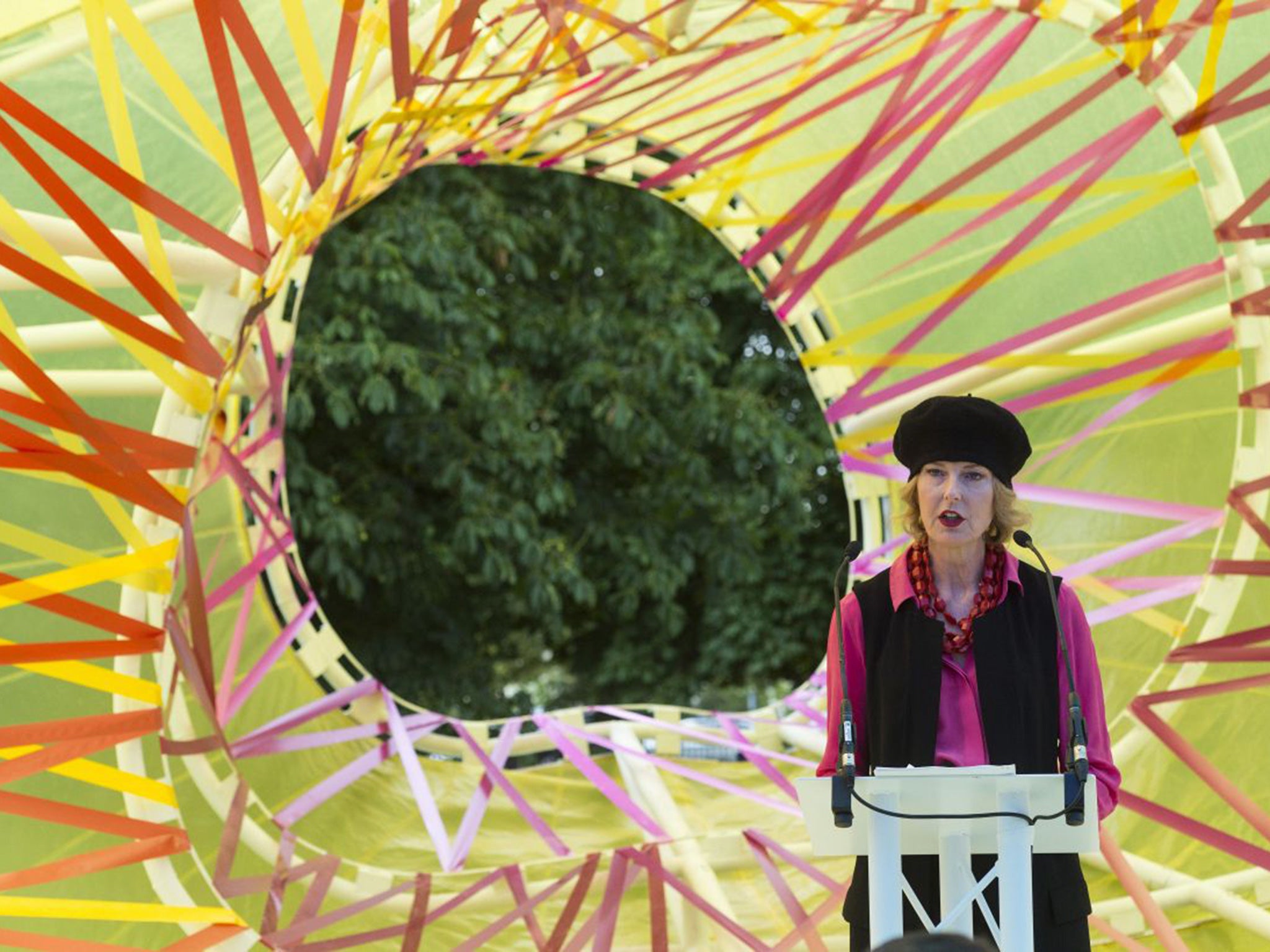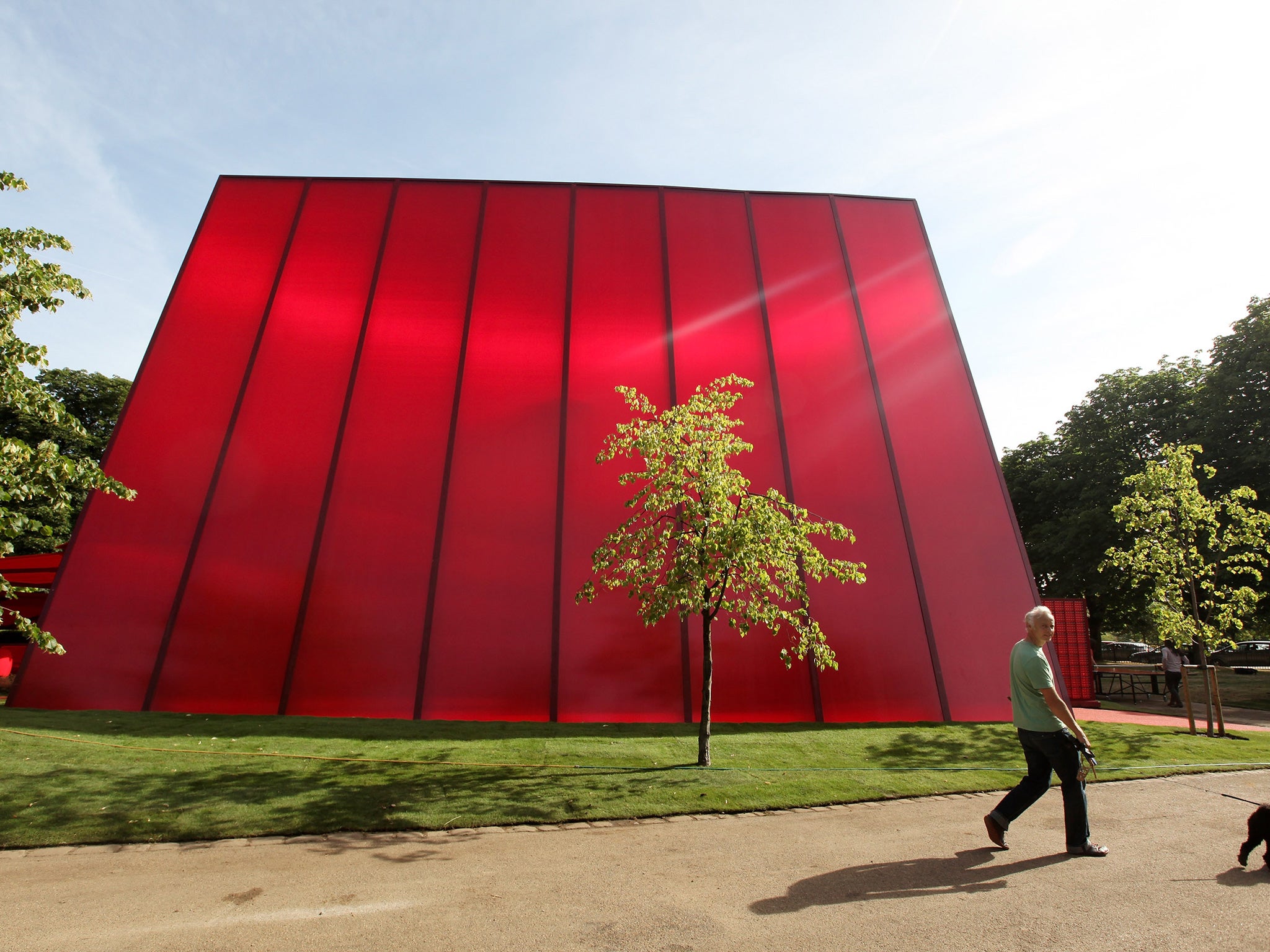Serpentine Galleries director Julia Peyton-Jones to step down after nearly 25 years
She will leave the Kensington Gardens venue in west London next July with 'the whole art community in her debt'

Your support helps us to tell the story
From reproductive rights to climate change to Big Tech, The Independent is on the ground when the story is developing. Whether it's investigating the financials of Elon Musk's pro-Trump PAC or producing our latest documentary, 'The A Word', which shines a light on the American women fighting for reproductive rights, we know how important it is to parse out the facts from the messaging.
At such a critical moment in US history, we need reporters on the ground. Your donation allows us to keep sending journalists to speak to both sides of the story.
The Independent is trusted by Americans across the entire political spectrum. And unlike many other quality news outlets, we choose not to lock Americans out of our reporting and analysis with paywalls. We believe quality journalism should be available to everyone, paid for by those who can afford it.
Your support makes all the difference.The Serpentine Galleries director who has spent a quarter of a century transforming it from a niche venue into an institution that attracts more than a million visitors each year and artists from around the world is to step down.
Julia Peyton-Jones will leave the Kensington Gardens venue in west London next July with “the whole art community in her debt” since her arrival in 1991, according to Sir Nicholas Serota, director of Tate.
The Serpentine opened in 1970 and has since worked with almost 2,900 artists, architects and designers from Damien Hirst to Ai Weiwei, Louise Bourgeois and Yoko Ono. Under Ms Peyton-Jones’s leadership, the original gallery was refurbished and it expanded to a second site in Kensington Gardens called the Serpentine Sackler Gallery, designed by Zaha Hadid.

This year marks the 15th anniversary of the annual Serpentine Pavilion commission – involving an international architect who has never completed a building in England designing a structure for the gardens of the gallery – which was conceived by Ms Peyton-Jones and is now perhaps its most famous feature.
Art experts think that finding someone able to repeat her success could be tough. “Memorable exhibitions, the annual commissions of a pavilion, and the regular marathons have brought an international cast of artists, architects, performers and curators to London,” Sir Nicholas said. He added that it “has been one of the leading venues in Europe” thanks to her work.
Sandy Nairne, the former director of the National Portrait Gallery, said: “She’s done amazing things. She transformed and enlarged the Serpentine making it one of the most consistently exciting visual arts venues in London.”
He hailed her skills for winning support and funding for the institution. “She did a huge amount and then brought in Hans Ulrich Obrist, and that seems to have been a winning combination.
“Together they have made the programme hugely ambitious. It is also a place of discussion and debate as well as enjoyment.”
Serpentine chairman Michael Bloomberg, the former mayor of New York, said during his 17-year association with the gallery he had seen “its ambitious transformation, which would never have been possible without Julia’s leadership”.
He added that as a result of her efforts “the future has never looked brighter”.
Serpentine pavilions: Independent verdicts
Pavilion in 2000, designed by Zaha Hadid
“An audacious zigzagging frame, covered from end to end with a fabric roof… that looked spectacular. So successful was [it] that the Serpentine [made] the pavilion commission an annual event.” Marcus Field in 2002
Pavilion in 2003, designed by Oscar Niemeyer
“It will be a long time before Oscar Niemeyer’s 2003 building is surpassed as the most beautiful of the gallery’s summer pavilions.” Jay Merrick in 2005
Pavilion in 2015 by Lucia Cano and José Selgas
“[The architects] have created a zany background for a million selfies, resembling a kids’ play area. Of all of the 15 summer pavilions to date, this is the most playful. It looks, and feels, incomplete, which is probably its most intriguing quality.” Jay Merrick in 2015
Join our commenting forum
Join thought-provoking conversations, follow other Independent readers and see their replies
Comments